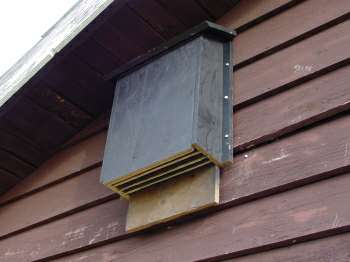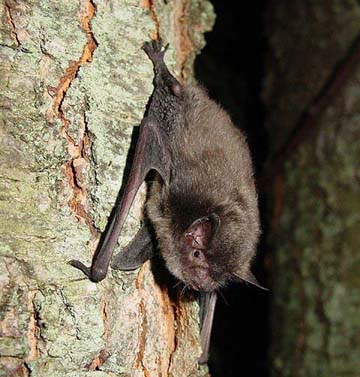Check in weekly, on Wednesdays, to read our new post on gardening, harvesting, and making use of that fine, extra-local produce! We’ll share tips and techniques, gleaned from our urban farms and gardens. Email info@growpittsburgh.org with any topics you’d like us to cover.
Bats have traditionally been feared and avoided, if not actively targeted. However, these often-misunderstood creatures can be a great benefit around homes and in gardens.
First, let’s dispel the myths.
- Rabies. While bats can carry rabies, they are less likely to have the disease than other common animals, like skunks and raccoons.
- Aggression toward humans. Bats are timid around humans and avoid us if at all possible. Bats are nocturnal, so in most cases you’ll only see them at night.
- Bats will get caught in my hair. With excellent vision and sonar, bats have no problem avoiding snares like human hair.
Here’s what bats can do for your garden and the area around your home.
- Eat insects. Bats eat an incredible amount of insects. One bat can eat more than 1000 insects per hour! This can amount to one-quarter to one-half of a bat’s body weight in one night. Some insects that bats eat include:
- Mosquitos
- Stinkbugs
- Cucumber beetles
- Leafhoppers
- Cutworm moths
- Corn earworm moths
- Provide guano. Underneath a bat roost, you’ll find piles of guano – or bat poo. Guano is high in fertility and organic matter and makes an ideal soil amendment.
So how can you attract these ravenous little insect-destroyers to your garden? Several bat species are considered threatened, due to various pressures including habitat destruction. The best way to draw them to your home or garden is provide habitat by hanging a bat house.
Bat houses are commercially available starting at around $30. Or, build your own! Here are free plans. Bats also need a water source, which can be anything from a garden pond to a birdbath. Bats need to stay warm when they roost, so choose a dark-colored bat house, that will absorb heat from the sun. Hang the bat box facing south to take advantage of solar heat, and make sure it’s high enough to discourage predators – about 12-18’ above the ground.

Bat houses placed on buildings tend to be successful. For some bat box building tips, check out the Maine Audubon Society’s blog.
According to Bat Conservation International, there is an over 80% success rate of bats inhabiting new homes. So your odds are good for attracting a silent, discreet, and all-natural force against insect pests around your home and garden. Most bats settle into the new home within1-6 months from installation. If the house remains empty after this time frame, either wait a little longer, or move the house to a new location.
Just a note on safety around bats. Bats are, of course, wild animals and therefore should never be handled. Any bat that appears during daylight or in an odd location should be left alone or reported to animal control authorities. In the unlikely event of a bite, safely capture the bat for testing, and seek medical attention immediately. Installing a bat house does not increase the chances of bats roosting within an adjacent building.
Bats can be an incredible force in the garden or yard, eating thousands of insects and saving time, money, and frustration. A well-designed, thoughtfully placed bat house and a water source are all it takes to get started.

